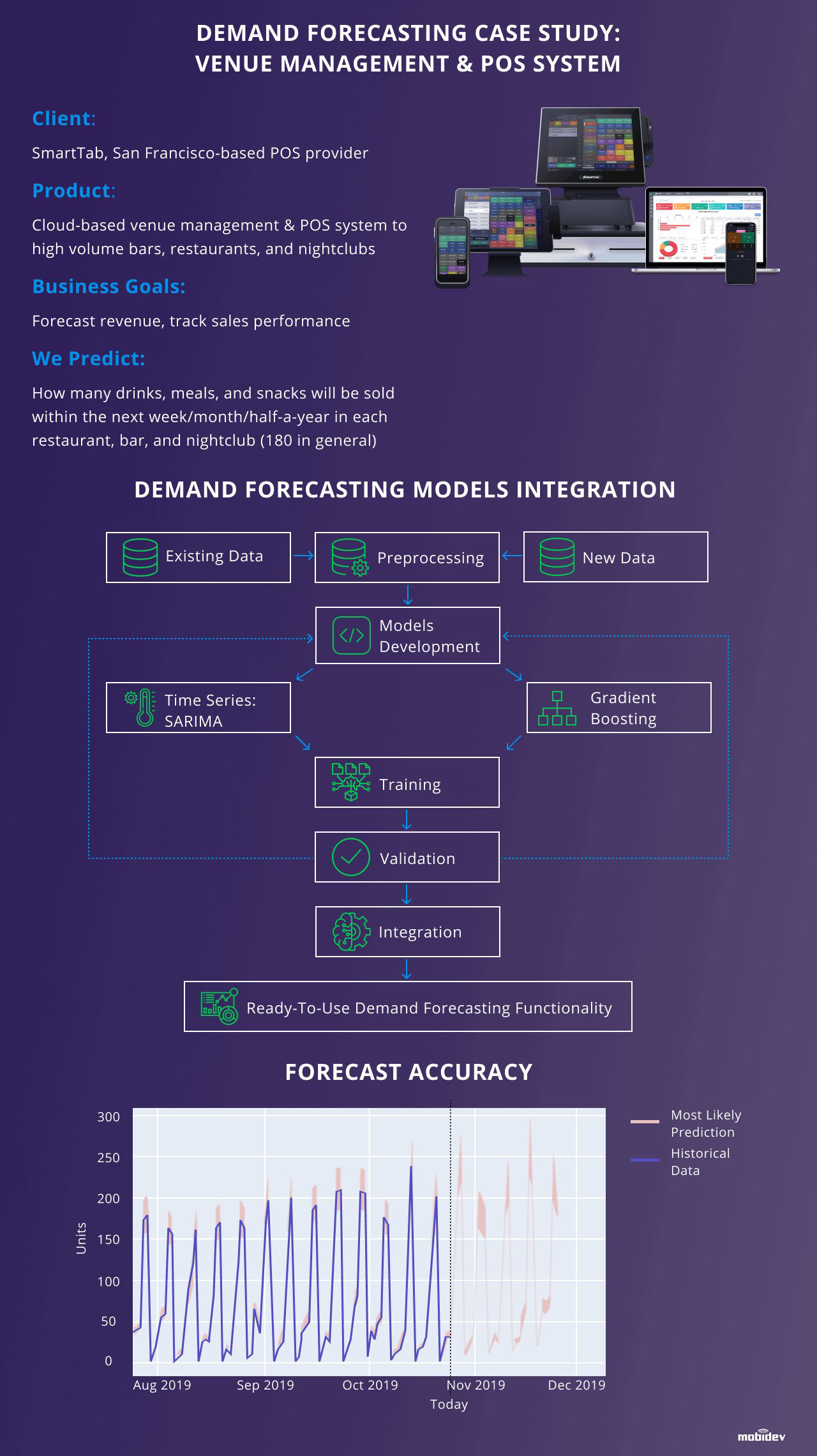The system uses point-of-sale data analysis based on machine learning to improve demand forecasting compared to traditional methods.
Machine learning plays an integral role in building forecasting models for retail demand. The application of machine learning in demand forecasting improves forecasting accuracy in both stable environments and during crisis management.
A system based on machine learning uses data for improving analysis when compared to traditional demand-forecasting methods.
The benefits of using machine learning include:
Improved demand forecasting has a positive impact on many vital processes in the retail environment.
Supplier relationship management improves through better demand forecasting. This improvement comes from calculating the amount of product inventory to order and determining the need for new suppliers or the advantages of reducing the number of suppliers to make improvements in the supply chain.
Customer relationship management improves by having the products wanted by customers immediately available. Demand forecasting predicts the inventory needed for each subsequent product-ordering cycle for each customer location. Improved customer satisfaction increases commitment to a brand.
Order fulfillment and logistics improve as demand forecasting optimizes supply chains. At the time of a customer order, the product will be in stock. Inventory turnover is better managed, and fewer unsold goods take up valuable retail display space.
Marketing campaigns are adjusted by forecasting models to influence sales revenue positively. Forecasting models use marketing data with sophisticated machine learning to discover the most cost-effective marketing methods.
Manufacturing flow management adjusts as part of the enterprise resource planning (ERP) effort. Demand forecasting predicts the production needs for the products that will eventually sell over a certain period.
This project included machine learning integration and demand forecasting for the SmartTab® point-of-sale (POS) and venue management system used by high-volume bars, restaurants, and nightclubs.
The project’s goals were to implement demand forecasting using machine learning with minimal action needed to operate the POS user interface and continuous integration for scalability and customization.
Here is the list of the technology, software, and tools used for the project:
The project’s goals were met by making all the POS operations of ordering and payments fast (within milliseconds) and precise. Using gradient boosting and time series, as the machine learning models, predicted the number of drinks, meals, and snacks that should sell during a selected future period for each venue.
The system architecture design made it possible to deploy the system at additional venues rapidly. The updating process progressed seamlessly for operating venues. Unique features could automatically be enabled for certain locations.
In total, 20 MobiDev software developers worked on this project. This solution deployed to more than 250 multiple-location, venue chains with 24/7 fail-safe operations using an offline plus cloud architecture.

Scott Ellyson, CEO of East West Manufacturing, brings decades of global manufacturing and supply chain leadership to the conversation. In this episode, he shares practical insights on scaling operations, navigating complexity, and building resilient manufacturing networks in an increasingly connected world.